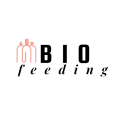Understanding Biomimetic Feeding
To provide the best for our little ones, it’s crucial to comprehend the intricacies of biomimetic feeding. As the term suggests, ‘biomimetic’ feeding draws its inspiration from nature, mirroring the natural way of feeding and nurturing an infant for optimal growth and development.
Biomimetic feeding has been recognized by experts for its potential benefits. According to a study published in PubMed, it significantly contributes towards healthier gut microbiota in infants, a key factor in their overall health.
Benefits of Biomimetic Feeding
Choosing biomimetic feeding for your baby offers a host of benefits. These include:
- Improved gut health: Biomimetic feeding promotes healthier gut makeup, leading to better nutrient absorption and a robust immune system.
- Natural balance: This approach helps maintain the natural balance of nutrients, mirroring those found in breast milk.
- Reduced risk factors: As per a study in PubMed, biomimetic feeding can potentially reduce the risk of obesity and associated diseases later in life.
- Monitor your baby’s response: Pay attention to how your baby is responding to the new feeding approach. This can include changes in their mood, digestion, sleep, and overall health.
- Consult regularly with a pediatrician: Regular consultations with a pediatrician will help assess your baby’s growth-path and whether the feeding approach needs any adjustments.
- Invest in quality products: Quality products will ensure your baby gets the closest approximation to breast milk for optimal growth and development.
Implementing Biomimetic Feeding
When it comes to infant nutrition, one size does not fit all. The same is true for biomimetic feeding. It’s important to tailor the feeding practice according to your baby’s needs and progress.
Selecting Suitable Products
Choose products that promise to deliver as close to nature’s perfect recipe as possible. For instance, companies like Emulait prioritize natural solutions, ensuring their products effectively emulate the nutritive balance and complexity of breast milk.
Pairing Biomimetic Feeding with Regular Check-ups
While biomimetic feeding ensures natural feeding, regular pediatric visits are crucial to monitor your baby’s growth and nutrition intake. Pediatricians can provide personalized advice based on your baby’s development. For guidance on selecting the right pediatrician, please visit our previous post.
Understanding Your Role
As a parent, remember that nurturing goes beyond mere feeding. Diaper changes, protecting your baby’s eyesight, and ensuring their overall health are equally important. Kindly refer to our posts on diaper changes and eye health for more information.
Research for Progress
At the crossroads of infant nutrition, research plays a pivotal role. A study published in ScienceDirect emphasizes the need for continuous research to refine and update the biomimetic feeding approach to accommodate the dynamic needs of growing infants.
Through these steps, you can ensure that your little one gets the closest to nature’s best. This way, biomimetic feeding doesn’t just cater to the physical growth but also contributes to the overall wellness, which is the backbone of a healthy and happy life.
Deeper Dive Into Biomimetic Feeding
If you’re new to the concept of biomimetic feeding, it is based on a simple yet powerful concept: emulating nature. To put it simply, it’s about mimicking the best of nature, specifically, a mother’s breast milk in feeding infants. This principle is also evident in the world of science as shown in the field of biomimetics, where the behavior, structure or function of living organisms inform technologies and solutions in various sectors, including feeding.
Quality Matters
It’s critical to note that not all baby food products are the same. The objective is to find products that best mimic the nutrient balance and complexity present in breast milk. The ingredients, their proportions, and the processing methods are all factors that determine the effectiveness of a biomimetic feeding approach.
Choosing the Best Products
Consider the quality of the bottle you use for feeding your baby. The design of the bottle and the flow of the teat play a significant role in ensuring the biomimetic feeding occurs as close to breastfeeding as possible. The product should make the baby work a bit to get the milk out, as naturally as they would do while being breastfed.
Paving the Way for the Future
Biomimetic feeding is no longer a niche concept. As parents increasingly become conscious of what they feed their infants, this nurturing approach is getting more popular and is being considered as a mainstream option. Such a shift towards natural methodologies is a promising sign for the health of future generations.
Research continues to pave the way in this realm, as evidenced by significant studies. These studies strive to deepen our understanding of biomimetic feeding, its impacts, how to further refine it, and how to make it more accessible to all.
Important Points to Ponder
While committing to biomimetic feeding, remember to:
Nurturing Absorbs More Than Food
Food is, without a doubt, one of the staples of growth. However, growth extends beyond physical parameters. Nurturing also includes aspects like emotional and mental well-being, which equally contribute to the overall development of a child. As parents, providing an environment that promotes all-round growth is arguably the greatest gift you can offer your little one.
Conclusion
As science advances, so do our understandings of baby nutrition and development. Biomimetic feeding, leveraging nature’s wisdom, provides a superior nourishment approach integral to the healthy growth of infants. Be it bottle design, feeding practice, or continuous research, all indications point towards a profound shift in prioritizing what’s natural, setting the stage for healthier generations to follow.

